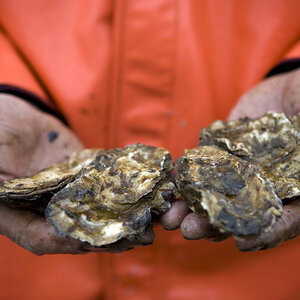Nature Conservancy, Pew allocate $6.3 million to oyster aquaculture

The Nature Conservancy (TNC) and Pew Charitable Trusts have announced the second phase of their Supporting Oyster Aquaculture and Restoration (SOAR) program.
Building on the initial $5 million phase one investment, phase two of SOAR includes a $3 million grant from the National Fish and Wildlife Foundation’s National Coastal Resilience Fund and $3.3 million from Builders Initiative, the philanthropic team of Builders Vision to rebuild oyster reefs and promote innovation, resilience, and diversity within the oyster aquaculture industry. Over the next four years, funds will be divided between the SOAR Purchase Program, which buys oysters from growers and deploys them in oyster reef restoration projects across the country, and the SOAR Shellfish Growers Resiliency Fund, which invests in projects that advance collaborative marine conservation efforts, increase economic opportunities for shellfish farming in the United States, and improve representation and equity in oyster aquaculture and conservation.
In the second phase, the Purchase Program will repurpose up to 2.5 million additional farmed oysters to rebuild 30 acres of reefs spanning 12 restoration sites in Maine, New Hampshire, Massachusetts, New York, New Jersey, Maryland, California, and Washington state, which will support a total of 100 farms and 300 jobs. At the same time, the Shellfish Growers Resiliency Fund will create an additional 50 industry-led projects, with a focus on diversity, equity, inclusion, and justice.
“After seeing the extraordinary benefits of leveraging farmed oysters in restoration sites, it became clear to us that this model of collaboration between the aquaculture sector and ecosystem restoration has the potential to be scaled in the U.S. and around the world,” said TNC global lead for aquaculture Robert Jones. “As we expand the scope of the project, we’re eager to realize the potential of partnering with farmers on conservation and consider where and how we might apply the model next.”
(Photo credit: Getty Images/laughing mango)




